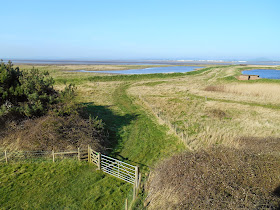There were no organised police forces in rural areas of England until
after 1839. Before this time, it was the
parish constable who was the keeper of law and order. An upstanding member of the community was
appointed annually to the post of constable by the local lord of the manor or
the parish vestry committee. It was an
unpaid role. The constable was responsible for the stocks, pillory, and village
lock‐up. He also secured prisoners and
escorted them to the quarter sessions or assizes.
Village lock ups, which are also known as blind houses,
guard-houses, cages or watch-houses, were designed for the temporary detention
of people in rural areas. Lock ups were often used to hold drunk people until
they sobered up. They were also used to hold criminals until they could
be taken to a local magistrate. Most lock ups were designed to house one
or possibly two people at a time. They
were small with one doorway and sometimes a very small window. They were
built of brick, stone or timber and in a variety of shapes: round, square,
rectangular or polygonal. Lock ups were
usually freestanding but were sometimes attached to or incorporated into other
buildings.
Most lock ups were constructed in the late 18th and early
19th centuries. There was an
increase in crime during this period, due to the social and economic upheavals
brought about by the industrial revolution and the demobilisation of military
personnel following the end of the Napoleonic Wars. The need for lock ups decreased after the
establishment of county police forces in the 1840s and 1850s. Many of them were demolished but a few have
survived to the present day.

Kingbury Episcopi's octagonal lock up
This is located in the centre of the village on the village green. It was probably built between 1820 and 1840.
Square lock up in Mells
Square blind house in Buckland Dinham
Square blind house - now used as a bus shelter - in Kilmersdon
Originally built by the churchyard wall as a guardhouse in 1785, rebuilt
in its present position in 1835 on the site of the parish stocks. It was restored by the parish council in 1992.
 |
Castle Cary's round lock up on Bailey Hill
This lock up is, according to the plaque on it, one of only 4 round lock ups in the country. It was built in 1779 at a cost of £23 by Mr W.M. Clark and was paid for by local charities. It was repaired in 1894. In 1922 the Lord of the Manor Sir Henry Hoare presented it to the parish council. It has no windows but does have 2 iron grilles for ventilation. It is 7 feet in diameter and 10 feet high.
 |
| Watchet's lock up is located round the back of the Museum |
Brompton Regis
This lock up is adjacent to an animal pound
Guard House in Horn Street at Nunney
This was built in 1824 and restored in 1985.
Monkton Combe
The Monkton Combe village lock up is approximately 8ft square with a domed
roof and it is built of Bath stone. It is fitted with an iron studded oak door
and contains two cells. It was built in the mid to late 18th century (possibly in 1776) and has an unusual domed roof and no windows.
Nether Stowey
This lock up has been converted into an information point for visitors. However when I visited in December 2015 it was being used to store road signs.
Wrington
The lock up in
the High Street at Wrington looks like a small cottage sandwiched between two
houses. It was built in 1825 and it was
unusual because the front half of the building was an office for the
Constable. Behind the office there were
two windowless cells.
Lock up next to the parish church in Freshford
This building was later used to house the village's fire engine.
Lock up in Freshford
The west porch of the Market Hall (formerly the Town Hall) in the Market Place at Somerton was a lock up at one time
|
|
|
|
|








































